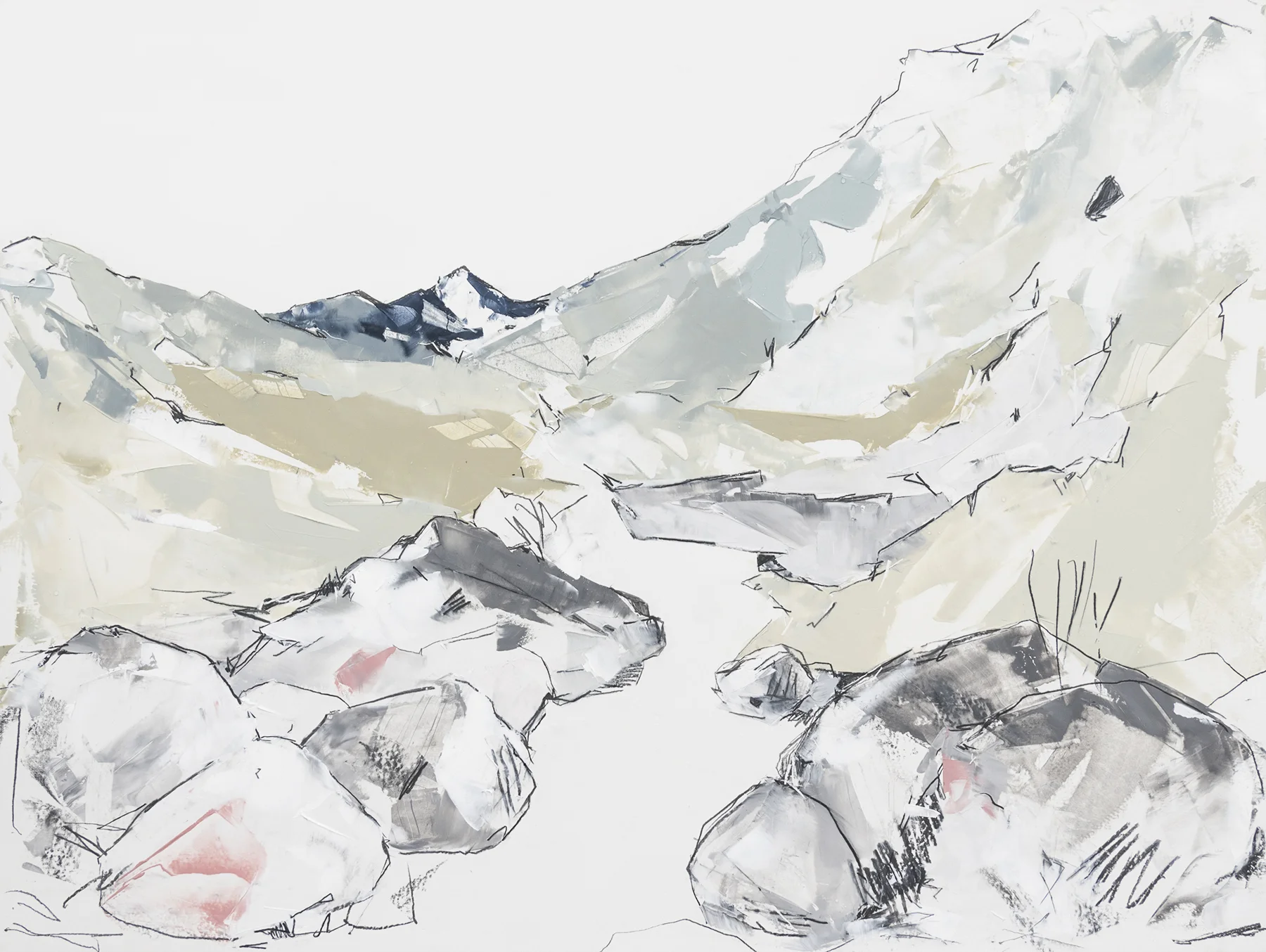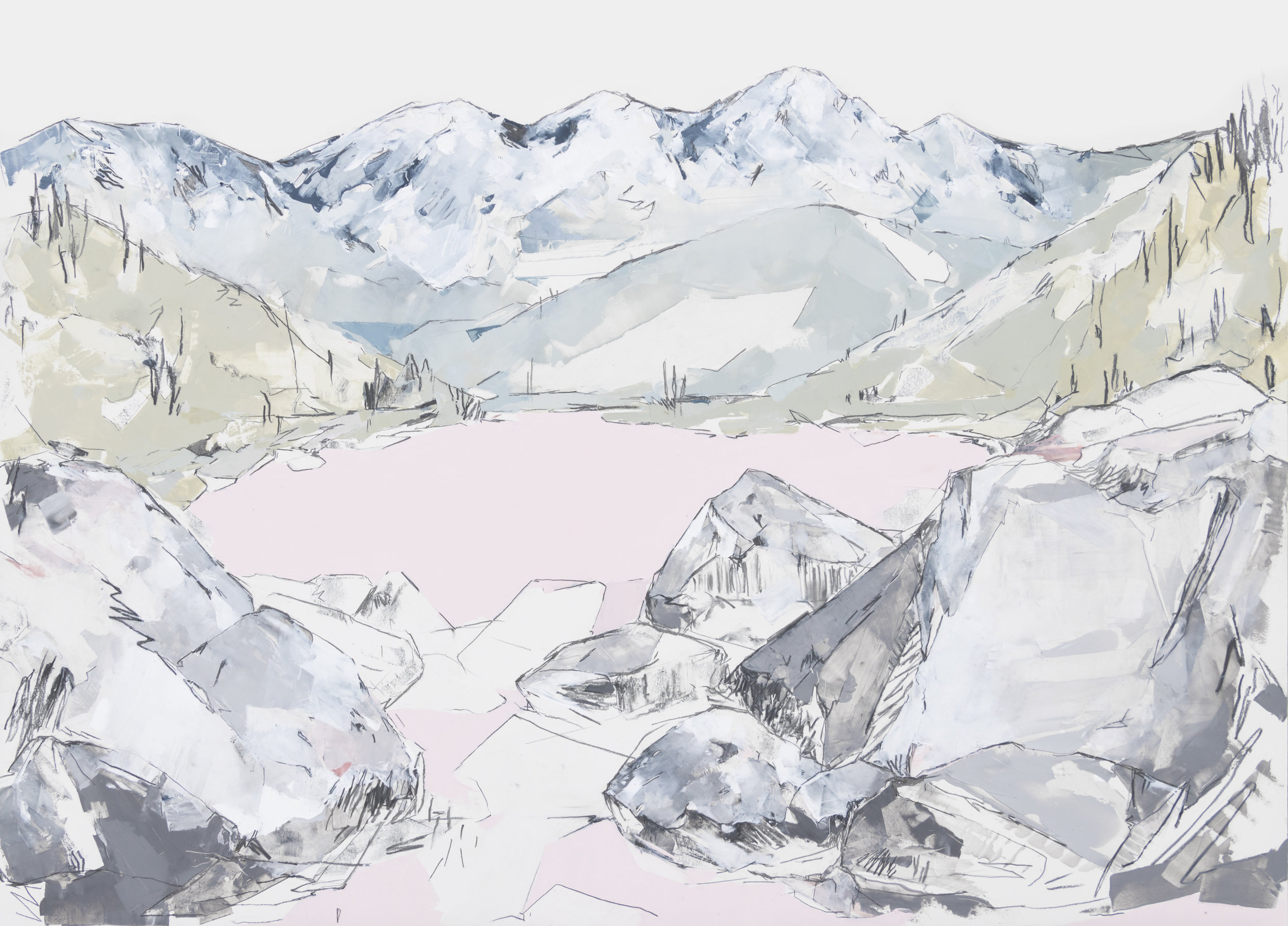“[…] this rock will be here, grave, earnest, not passive: the energies
That are its atoms will still be bearing the whole mountain above: and I, many packed centuries ago,
Felt its intense reality with love and wonder, this lonely rock.”
from Oh, Lovely Rock, by Robinson Jeffers
In May of 2018, I traveled to a little island off the coast of Ireland for a writing retreat. With an invitation to uncivilize my practice, I was able to find what was wild within me. Somewhere between the water and the rocks, the sea otter and the swift, I found something I had forgotten. Since then, I have paid more attention.
At first glance, these landscape paintings depict a beautiful scene, but, with time, the image begins to fracture, graphite lines wind through the contours of the landscape, breaking up the scene as they intersect with swatches of color. Although I think at least a hint of crisis is important in contemporary landscapes, my intention is not to create an overly dramatic fragmentation or sense of falling apart. I hope this disintegration of the image, this labyrinth through stone, pulls the viewer into a contemplation of the land and their being within the land.
I consider rocks to be reflections as well as watchers. The rock portraits, “We are poems,” investigate the idea that rocks are witnesses to the past and harbingers of the future. Parts of a whole but separate and sovereign, they are the same as the mountains they fell from.
As I investigate my role as a human upon the Earth, I deepen my journey by turning to my Eastern European lineage. My ancestors hold a profound relationship with the land. Generations of foresters fostered the role of humans as stewards of the Earth, and their values were passed to me, a generation and an ocean away. Centuries before them, my indigenous European ancestors held ancient wisdoms in their Earth-based spirituality. By beginning to heal my ancestral lineage, I have found a conduit to developing my interbeing with the Earth.
In general, these works investigate stories I have found within the landscape, both internal and external. They serve as a space to ask questions about place, wildness, stewardship, and civilization.
March 2019



























